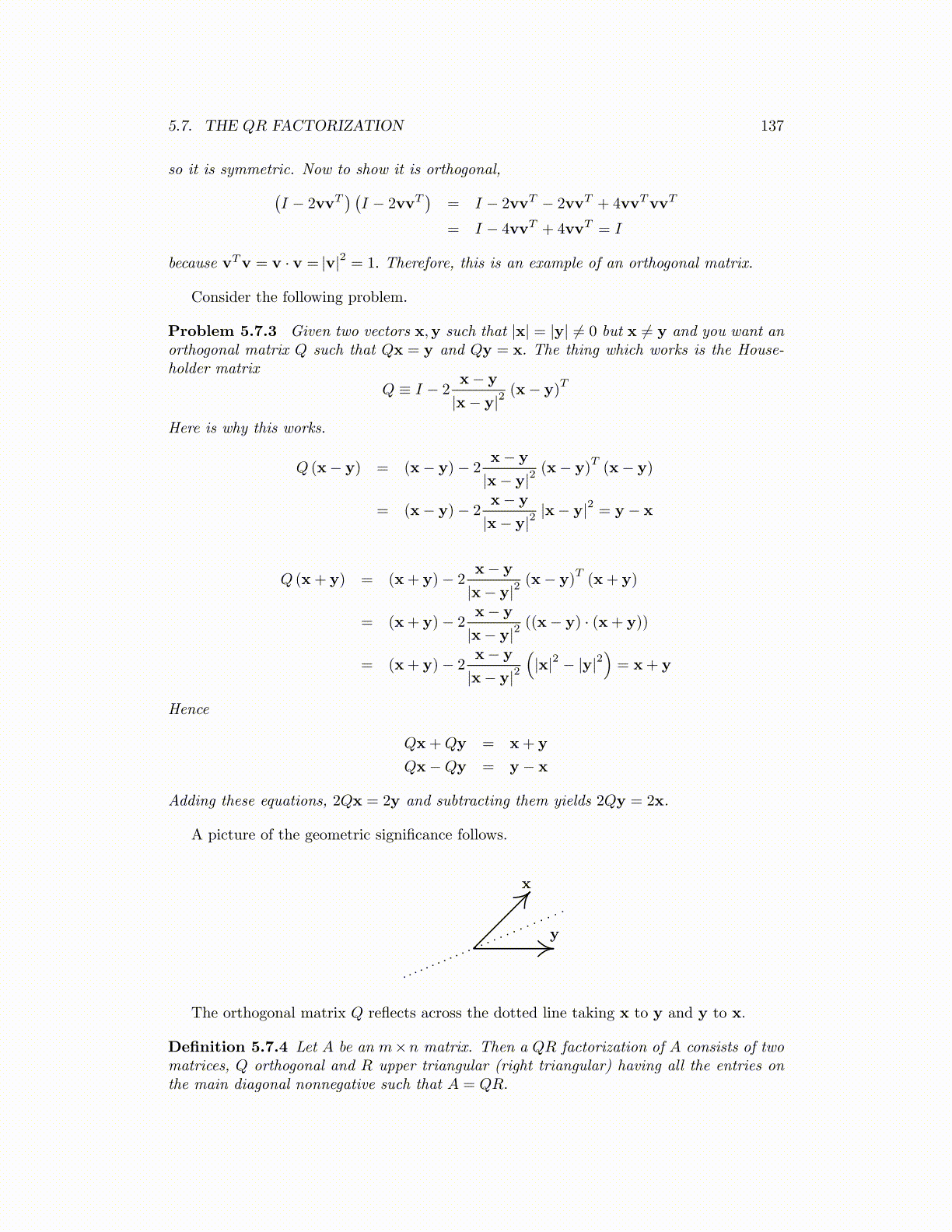
5.7. THE QR FACTORIZATION 137
so it is symmetric. Now to show it is orthogonal,(I − 2vvT
) (I − 2vvT
)= I − 2vvT − 2vvT + 4vvTvvT
= I − 4vvT + 4vvT = I
because vTv = v · v = |v|2 = 1. Therefore, this is an example of an orthogonal matrix.
Consider the following problem.
Problem 5.7.3 Given two vectors x,y such that |x| = |y| ≠ 0 but x ̸= y and you want anorthogonal matrix Q such that Qx = y and Qy = x. The thing which works is the House-holder matrix
Q ≡ I − 2x− y
|x− y|2(x− y)
T
Here is why this works.
Q (x− y) = (x− y)− 2x− y
|x− y|2(x− y)
T(x− y)
= (x− y)− 2x− y
|x− y|2|x− y|2 = y − x
Q (x+ y) = (x+ y)− 2x− y
|x− y|2(x− y)
T(x+ y)
= (x+ y)− 2x− y
|x− y|2((x− y) · (x+ y))
= (x+ y)− 2x− y
|x− y|2(|x|2 − |y|2
)= x+ y
Hence
Qx+Qy = x+ y
Qx−Qy = y − x
Adding these equations, 2Qx = 2y and subtracting them yields 2Qy = 2x.
A picture of the geometric significance follows.
x
y
The orthogonal matrix Q reflects across the dotted line taking x to y and y to x.
Definition 5.7.4 Let A be an m×n matrix. Then a QR factorization of A consists of twomatrices, Q orthogonal and R upper triangular (right triangular) having all the entries onthe main diagonal nonnegative such that A = QR.